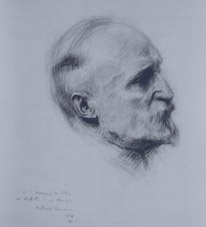José Marques da Silva
| José Marques da Silva | |
|---|---|
 |
|
| Born | 18 October 1869 Porto, Portugal |
| Died |
6 June 1947 (aged 77) Porto, Portugal |
| Occupation | Architect, educator |
| Signature | |
 |
|
José Marques da Silva (18 October 1869 – 6 June 1947) was a Portuguese architect.
José Marques da Silva was born at 113 Rua de Costa Cabral, in Porto, on 18 October 1869. His architectural training began at the Porto Academy of Fine Arts, where his teachers were, among others, António Geraldes da Silva Sardinha, João Marques de Oliveira and António Soares dos Reis. In 1889 he left for Paris in order to enter the École nationale supérieure des Beaux-Arts, and remained in the city until he received the French Government degree of Graduate Architect on 10 December 1896.
During his time in Paris, Marques da Silva did the majority of his academic work in a free atelier external to the School under the direction of Victor Laloux, resulting in some notable architectural drawings. At the time this atelier was attended by an international community of architecture students, featuring names such as Charles Lemaresquier, future successor of Victor Laloux, Paul Norman, who would win the Grand Prix of 1891, Charles Butler, the atelier's first American graduate, in 1897, and even his fellow-countryman Miguel Ventura Terra. Dating from this period, the Architect José Marques da Silva Foundation Institute holds a unique set of documents consisting of 67 architectural drawings, an important and enlightening record of fin-de-siecle architectural practices within the Beaux-Arts tradition.
Marques da Silva returned to Portugal in 1896, and his intense professional activities quickly earned him public recognition. At the Paris Universal Exposition of 1900 he received the silver medal and at the Rio de Janeiro Exposition of 1908 he was awarded the gold medal. In 1908 he was awarded the Official Degree of the Santiago [St James] Order of Merit for Science, Literature and Art. With designs such as the São Bento Railway Station (1896), the São João National Theatre (1910), the Four Seasons Building (1905), the Alexandre Herculano High School (1914) and the Rodrigues de Freitas High School (1919), the Nascimento Department Store (1914), the Casa de Serralves (1925–1943) and the Monument to the Heroes of the Peninsular War (1909), he shaped the face of the city of Porto, but his activities also extended to other areas in the north of the country, in particular Guimarães, a city for which he would design several important buildings such as the headquarters of the Martins Sarmento Society, the Market Hall and the Penha Sanctuary. His work, at a moment of change in construction practices, combined the values of the Beaux-Arts tradition with the elements of reason, resulting in practical designs adapted to the mechanics of modern life, with his own individual way of understanding the building of the city.
...
Wikipedia
